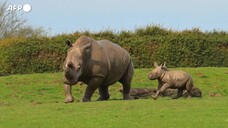The melting of Alpine glaciers due to climate change threatens biodiversity too, with the most at-risk species being aquatic invertebrates living in cold Alpine rivers, species that play a key role inside this ecosystem and will be faced with a massive loss of their habitat, according to a study led by Essex and Leeds universities in the UK, in which Italy took part with the Muse Science Museum at Trento.
The research, published in the journal Nature Ecology & Evolution, underscores the need for new conservation strategies: some species, for example, will have to be moved to higher altitudes, since they are not able to do so on their own.
“We used data collected in 25 years of studies on Alpine streams,” Valeria Lencioni, Muse researcher and co-author of the study, told ANSA. “Thanks to the development of models like ours, which combine glaciology, hydrology and ecology, it is now possible to analyze the aquatic communities subjected to growing stress in the mountain systems of the whole world. “These models,” adds the researcher, ”must be urgently used to tailor the conservation of fresh water to the ongoing climate changes”.
The researchers, led by Martin Wilkes of Essex University and Jonathan Carrivick of Leeds University, mapped the distribution of 15 species of invertebrates (above all insects) all over the Alps. Forecasts from here to 2100 indicate that many species of flies, mosquitoes and worms will disappear from their current areas and will seek colder conditions in the higher parts of the mountain chain. These very same areas, however, will become priority areas for skiing, tourism and the development of hydro-electric power stations.
Riproduzione riservata © Copyright ANSA












